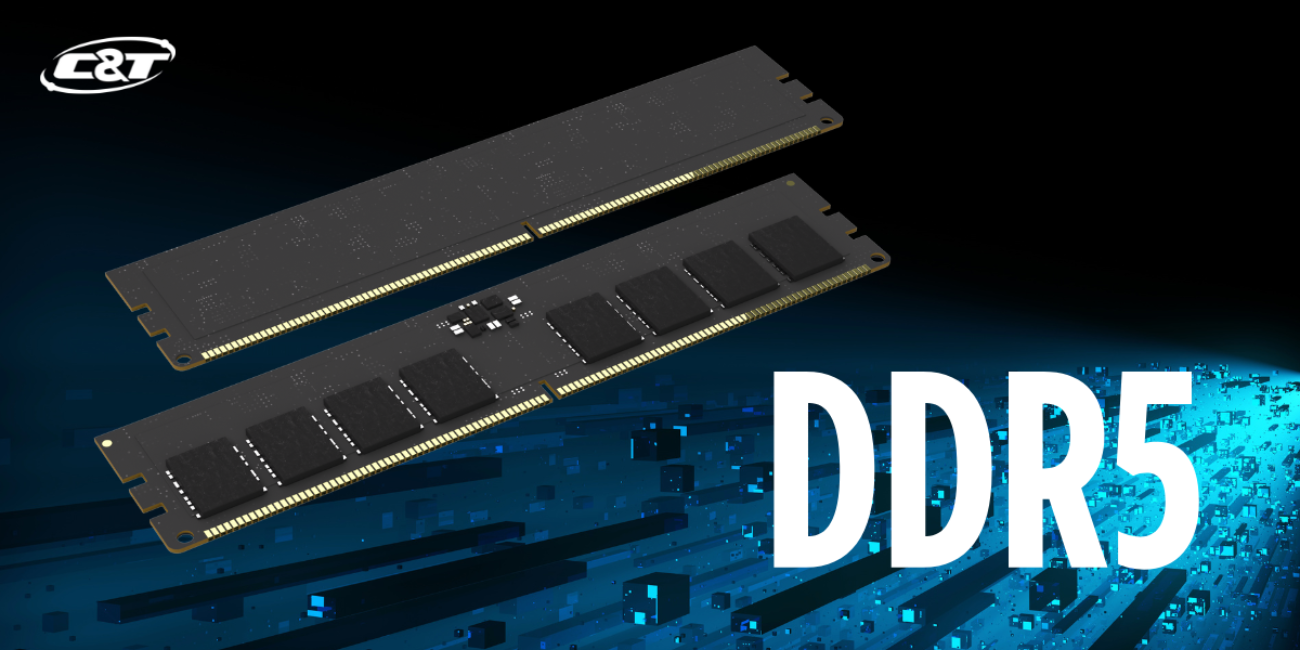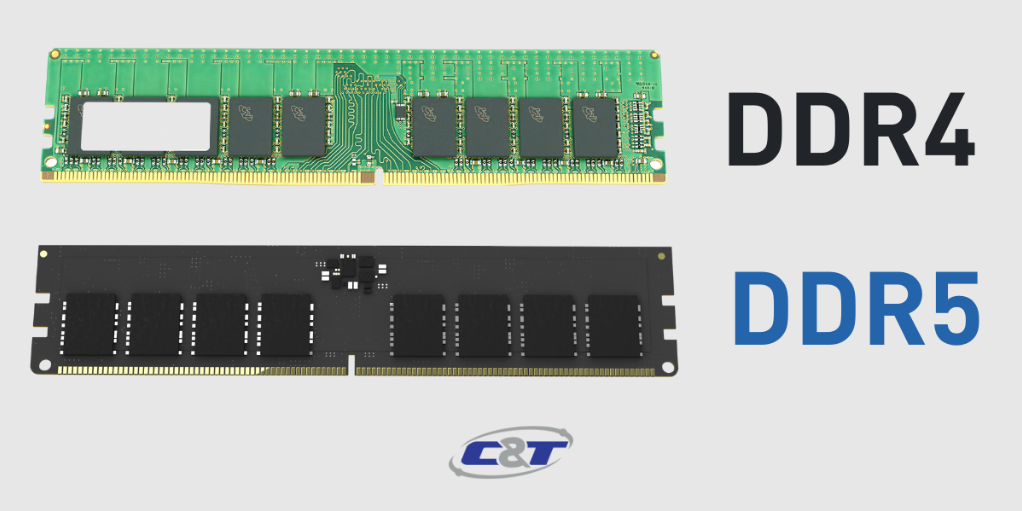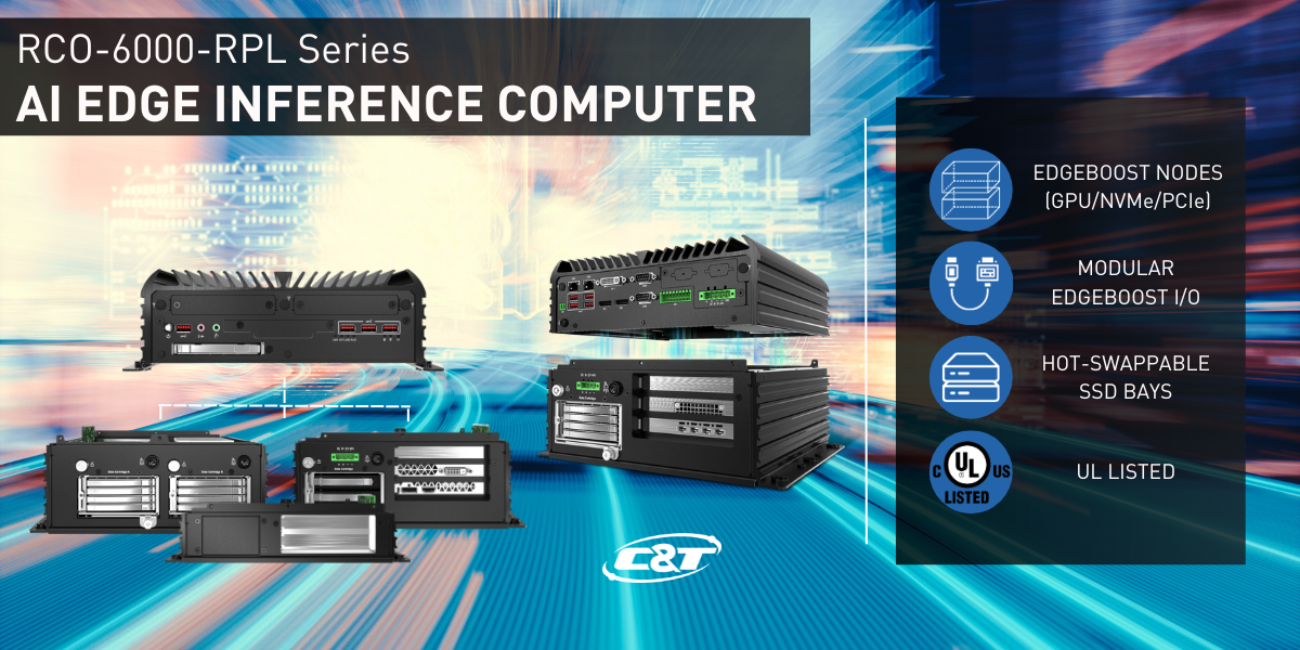DDR5- Latest Industrial DRAM Module Generation

In an era increasingly reliant on edge and embedded computing, especially with the ascent of Edge AI, our hardware systems face the demanding challenge of handling ever-expanding data workloads. Thanks to the innovative hybrid architecture introduced by the new Intel Alder Lake Processor, we now have access to enhanced speeds and more energy-efficient operation through DDR5 SDRAM technologies. These advancements empower computers to tackle resource-intensive tasks like AI-driven applications and video processing. In this blog post, we'll investigate industrial DDR5 memory compatibility with the Intel Alder Lake and Raptor Lake Processors.
What is DDR5?
DDR5 SDRAM (Double Data Rate 5 Synchronous Dynamic Random Access Memory) is the latest, fifth generation of DDR technology, surpassing DDR4 with enhanced speed, efficiency, and performance. A key advancement in DDR5 is its ability to lower power consumption while doubling bandwidth compared to DDR4. This enhancement is largely due to the integration of on-board voltage regulators, facilitating increased speeds in DDR5 modules.
What Is The Difference Between DDR5 and DDR4 ?

| Specification | DDR4 | DDR5 |
| Bandwidth | Maximum 3200 MT/s | About 4800-5600 MT/s |
| Capacity | 32GB/module | Up to 128GB/module |
| IO Voltage | 1.2V | 1.1V |
| Bank groups | 16 banks | 32 banks |
| Burst Length | 8 | 16 |
| Latency | Lower Latency | Higher Latency |
| Power Management | On motherboard | On Module |
| On-die ECC | Not standard | Available in some modules for better data integrity |
DDR5 represents a significant advancement over DDR4, offering increased bandwidth and data transfer rates for improved performance in handling large volumes of data. It supports a larger memory capacity, up to 128GB per module, allowing for more data and applications to be stored. While DDR5 operates at a lower voltage than DDR4, enhancing power efficiency and potentially extending lifespan, it does generate more heat. The design changes in DDR5 include doubling the number of bank groups and burst length, which improve data access times and overall performance. Despite having higher latency than DDR4, the multitude of DDR5's benefits, such as enhanced power management directly on the memory module and optional error-correcting code (ECC) for data integrity, often outweigh this factor.
How DDR5 Become The Best Solution For Industrial Grade Memory?
DDR5 has emerged as the optimal solution for industrial-grade memory needs due to the increasing demands of modern technologies like big data, cloud, edge computing, and the Internet of Things. With edge computing systems processing extensive data from a multitude of sensors and devices, there's a critical need for powerful memory capable of supporting complex computations and analytics. While DDR3 and DDR4 were sufficient for earlier requirements, DDR5 has been specifically designed to address contemporary challenges. It offers superior application flexibility, enabling efficient management of large data sets, intricate simulations, and comprehensive analytics. This enhanced capacity significantly improves the performance of edge computing systems, allowing for more effective execution of a diverse array of applications and algorithms.How can Edge AI leverage DDR5?
DDR5 is a crucial component in the advancement of Edge AI devices, increasingly becoming essential as AI moves closer to data sources at the edge. This advanced memory technology is key to ensuring that Edge AI systems are efficient and robust. DDR5 enhances Edge AI performance through:
- Accelerated data processing, crucial for time-sensitive applications like autonomous vehicles.
- Increased power efficiency, a significant advantage for devices reliant on batteries.
- The capacity to process substantial data on-site, especially beneficial in areas with limited connectivity.
- Multitasking capabilities, enabling simultaneous execution of multiple AI tasks.
- Improved data reliability, thanks to DDR5's on-die ECC (Error-Correcting Code).
- Adaptability to the evolving landscape of AI technology.
- Support for intricate AI models on the devices themselves.
- Minimized latency in AI operations, essential for applications that require immediate response.
The Importance of RAM and High Speeds for Industrial Computers
RAM is essential in determining the efficiency and speed of industrial computers, serving as the system's short-term memory for storing and processing active data. Having more RAM allows for handling more data simultaneously, thus enhancing overall performance. For industrial computers engaged in complex tasks, fast data access and efficient multitasking are crucial. Higher GT/s rates contribute to smoother multitasking, quicker data retrieval, and better performance in tasks with intensive graphics. However, when upgrading or building new systems, it's important to consider the compatibility of components and be aware of potential system bottlenecks. Keeping up with technological advancements and future-proofing hardware are key in the fast-evolving tech world.
Conclusion
Intel's 12th and 13th Generation CPUs are designed to be compatible with DDR5 memory, which offers enhanced bandwidth and speed, although improvements in latency are still in progress.
The RCO-6000-RPL, C&T’s latest AI Edge Inference Computer, is equipped to support Intel Alder/Raptor Lake CPUs and DDR5 memory, alongside capabilities up to PCIe 5.0 speeds. This system exemplifies the strides made in modern industrial computing technology. It stands as an excellent option for those in search of robust and future-proof industrial solutions. For a detailed overview of its key features, refer to the banner below.


